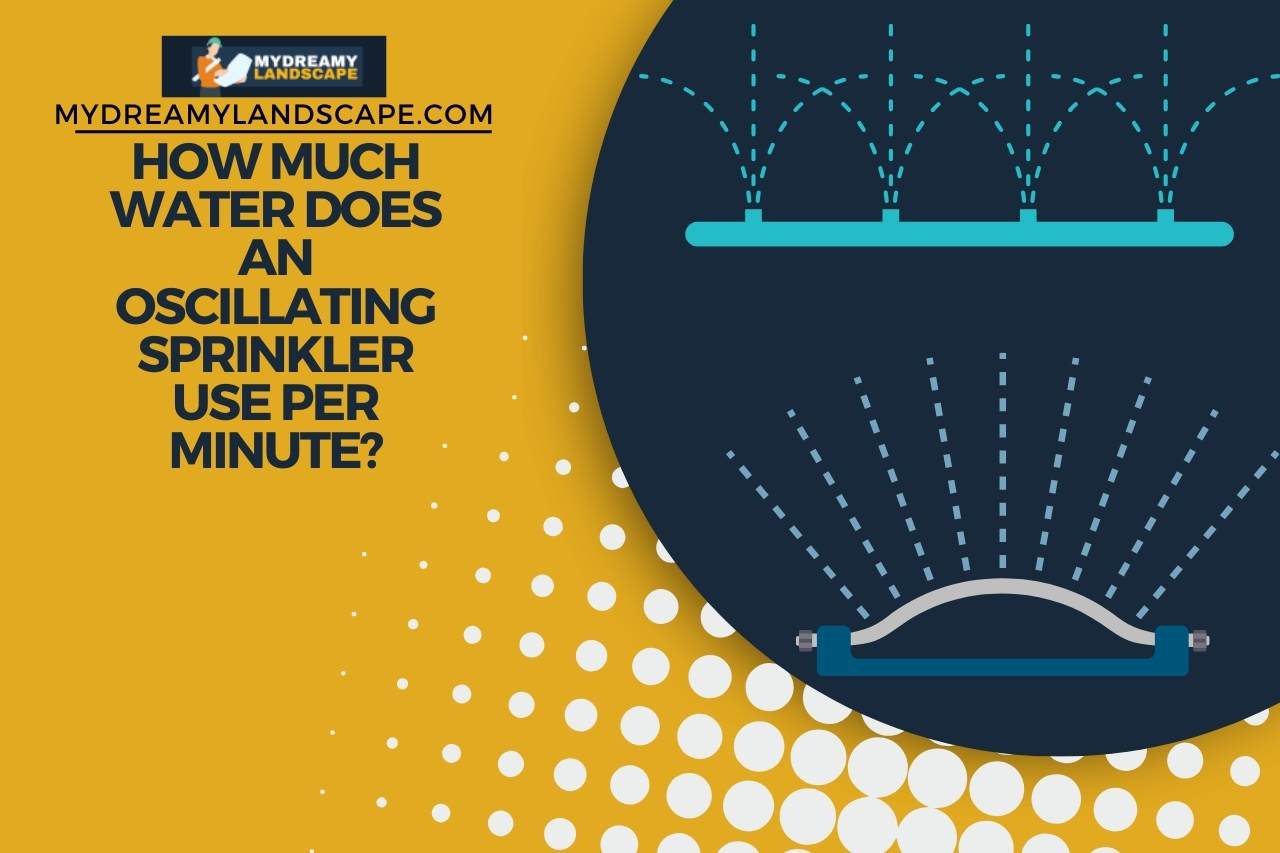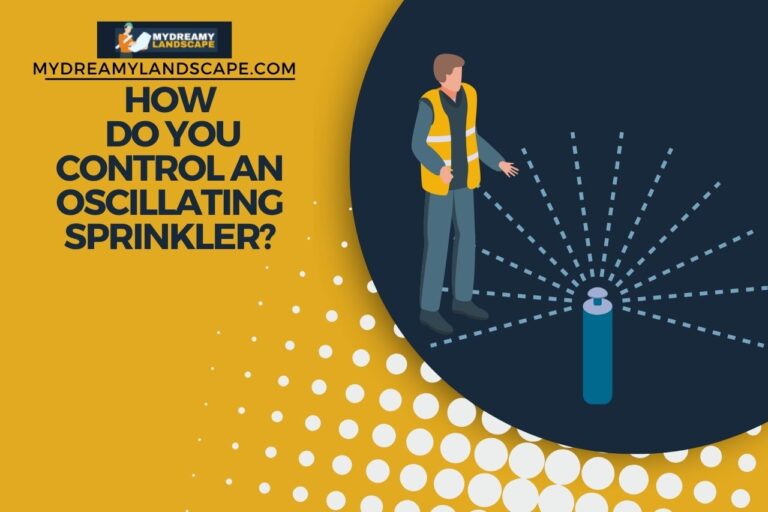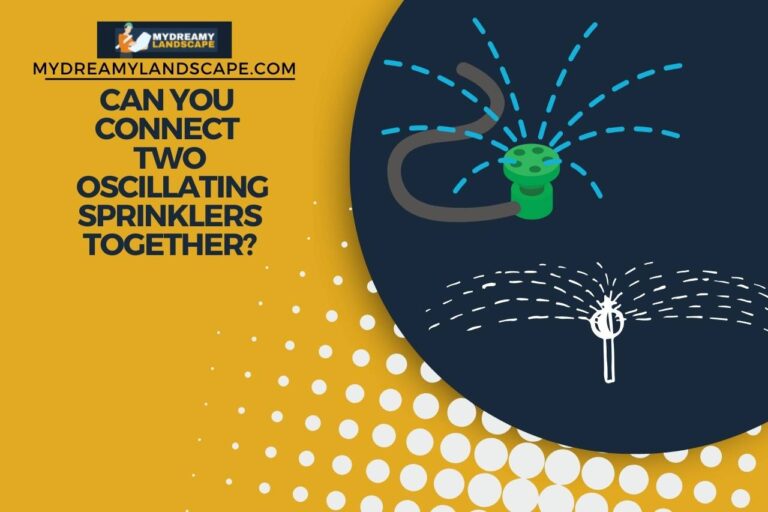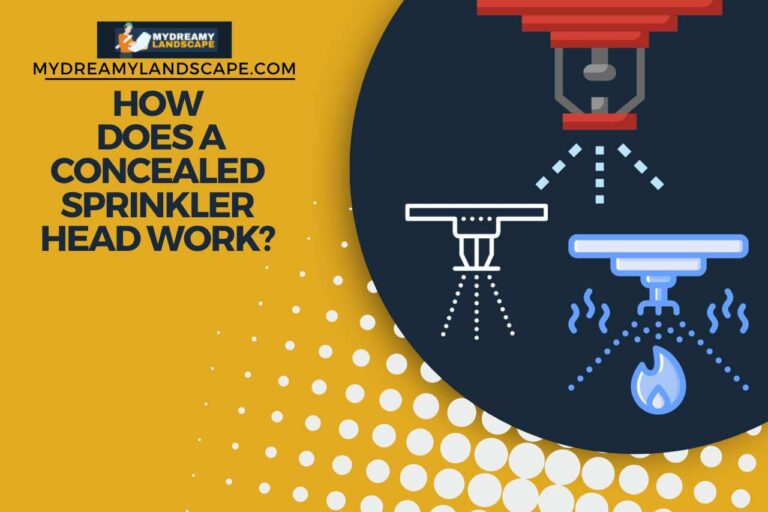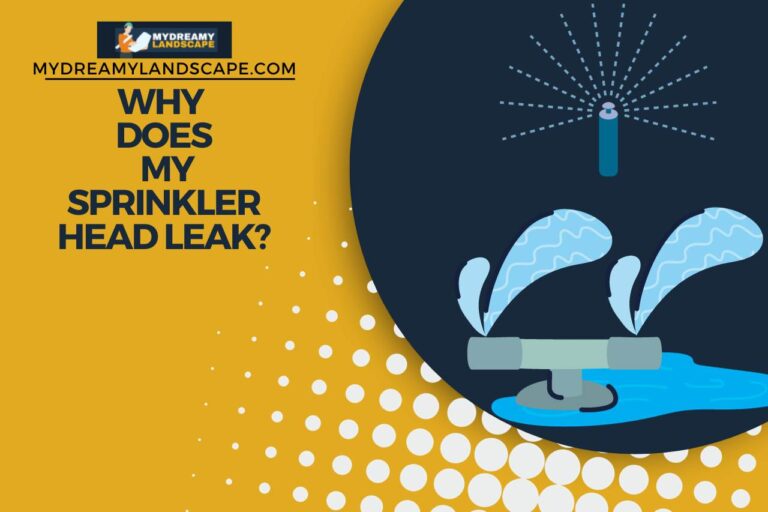How Much Water does an Oscillating Sprinkler Use Per Minute?
Are you curious to know about ‘How much water does an oscillating sprinkler use per minute?’ Awesome! That is the exact topic we discuss in this article. Keep reading to become a more informed and responsible gardener, conserving your resources while enjoying a lush and vibrant landscape. Let’s start.
How Much Water Does an Oscillating Sprinkler Use per Minute?
An oscillating sprinkler typically uses around 17 gallons per minute. However, the amount of water it uses per minute can vary based on several factors.
The water usage of an oscillating sprinkler depends on your sprinkler’s design and flow rate. Different oscillating sprinkler models come with varying flow rates, which determine the volume of water delivered each minute. Check your sprinkler’s specifications to find this flow rate, typically measured in gallons per minute (GPM).
Factors Affecting Water Consumption of an Oscillating Sprinkler
The flow rate, water pressure, spray pattern and coverage, lawn size and timer settings are some factors that influence the water consumption of an oscillating sprinkler. Let’s have a look at these factors.
Flow Rate
The flow rate of your oscillating sprinkler is a fundamental factor. It’s typically measured in gallons per minute (GPM) and determines how much water your sprinkler delivers in one minute. Different models come with varying flow rates, so it’s essential for you to check your sprinkler’s specifications.
Water Pressure
Water pressure is another significant factor. Higher water pressure results in a more forceful spray, which may lead to increased water consumption. Regulating the pressure at the water source or using a pressure regulator can help you manage water usage more effectively.
Spray Pattern and Coverage
Most oscillating sprinklers allow you to adjust the spray pattern, width, and length. Customizing the pattern ensures that water is directed precisely where it’s needed, preventing overspray and reducing water wastage.
Lawn Size
The size of your lawn directly impacts the water consumption of your oscillating sprinkler. Larger lawns naturally require more water to cover the entire area effectively. Understanding the dimensions of your lawn helps you determine the appropriate watering duration to avoid overwatering.
Timer Settings
The duration for which you run the sprinkler is another critical factor. Using a timer or following recommended watering guidelines for a region can help you prevent the overuse of water.
How to Conserve Water with Your Oscillating Sprinkler?
Efficient water use with an oscillating sprinkler not only benefits your lawn but also conserves water. Here’s how you can minimize the water consumption with an oscillating sprinkler:
Proper Maintenance
Regularly inspect your sprinkler for any leaks, clogs, or damaged components. Fixing the issues promptly ensures that water is used efficiently and doesn’t go to waste.
Adjust Spray Area
Customize the spray pattern to match the shape and size of your lawn. This prevents watering non-essential areas like sidewalks or driveways, reducing water wastage.
Use a Timer
Set a timer to control the watering duration. Many oscillating sprinklers come with timers, allowing you to specify when and for how long the sprinkler operates. This prevents you from overwatering.
Install a Rain Sensor
Consider adding a rain sensor to your sprinkler system. Rain sensors can detect when a lawn has received sufficient natural rainfall and temporarily disable the sprinkler, conserving water.
Time the Watering
Water your lawn during the early morning or late afternoon when temperatures are cooler, and evaporation is minimal. Watering during the heat of the day can lead to increased water loss.
Adjust Water Pressure
If the water source has high pressure, consider installing a pressure regulator to reduce the force of the spray. This not only conserves water but also prevents soil erosion.
Monitor Soil Moisture
Invest in soil moisture sensors that measure the moisture content of your lawn. These devices can help you determine when it’s truly necessary to water, preventing unnecessary usage.
You May Also Like
- The Oscillating Sprinkler Stopped Moving – Keep It Oscillating!
- How to Find Buried Sprinkler Heads? Unearthing Your Lawn’s Hidden Assets
- How To Raise The Sprinkler Head? Elevate Your Lawn Care
- Sprinkler Head Not Rotating – (Causes and Solutions)
- Why does My Sprinkler Head Leak? Decoding the Mystery!
- Oscillating vs Rotary Sprinklers – Which Sprinkler is Right for You?
- Why is My Impact Sprinkler Rotating Slowly? Sluggish Sprinkler Solutions!
- How Do you Adjust Impact Sprinkler Rotation? Troubleshooting & Adjustment Tips!
- Can you Connect Two Oscillating Sprinklers Together? Mastering Multi-Sprinkler Setup!
- How Do you Control an Oscillating Sprinkler? (Step-by-Step Guide)
- How Far does an Oscillating Sprinkler Go? Maximizing Coverage!
